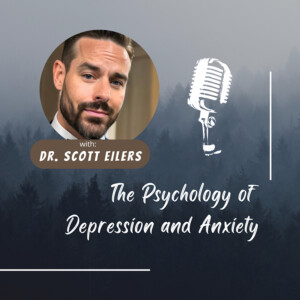
The Psychology of Depression and Anxiety - Dr. Scott Eilers
Health & Fitness:Mental Health

The outside world is wildly mistaken about self-harm - and those who engage in it. Contrary to popular belief it isn't a cry for attention or something only the severely depressed do. In this video I'm debunking the misconceptions associated with self-harm. I also share why this act is usually shrouded in secrecy, shame, and embarrassment, and why it's challenging for individuals to seek help or openly discuss their experiences. Get my book: For When Everything is Burning https://bit.ly/forwheneverythingisburning Connect with me on TikTok: https://www.tiktok.com/@dr.scott.eilers See it on YouTube https://www.youtube.com/channel/UCogWI9kVVvmRRPzzQBrOwzg Here's what's inside: 00:00 People who self-harm do not do so for attention-seeking purposes. Self-harm is one of the most stigmatized and misunderstood mental health symptoms. It is rarely for attention-seeking but primarily for emotion regulation. 03:29 Self-harm behaviors are expressions of overwhelming emotional distress and a lack of support or coping tools. It's similar to other emotion regulation behaviors like excessive alcohol consumption or impulsive behaviors. People seek a way out from intense unhappiness. 10:10 There are alternative ways to manage emotional distress without resorting to self-harm. One approach is to use intense sensory experiences to trigger the brain's pain response without causing harm. For example, you can use extreme flavors like spicy or sour foods to divert your focus from emotional pain. Additionally, using temperature extremes, such as holding something warm or cold, can simulate the physical sensation without causing long-term harm.
--- Support this podcast: https://podcasters.spotify.com/pod/show/scott-eilers/supportMore Episodes
 2023-10-18
2023-10-18
 2023-10-11
2023-10-11
 2023-10-04
2023-10-04
 2023-09-27
2023-09-27
 2023-09-20
2023-09-20
 2023-09-13
2023-09-13
 2023-09-06
2023-09-06
 2023-08-23
2023-08-23
 2023-08-16
2023-08-16
 2023-08-09
2023-08-09
 2023-07-19
2023-07-19
 2023-07-12
2023-07-12
 2023-07-05
2023-07-05
 2023-06-28
2023-06-28
Create your
podcast in
minutes
- Full-featured podcast site
- Unlimited storage and bandwidth
- Comprehensive podcast stats
- Distribute to Apple Podcasts, Spotify, and more
- Make money with your podcast
It is Free
- Privacy Policy
- Cookie Policy
- Terms of Use
- Consent Preferences
- Copyright © 2015-2024 Podbean.com





